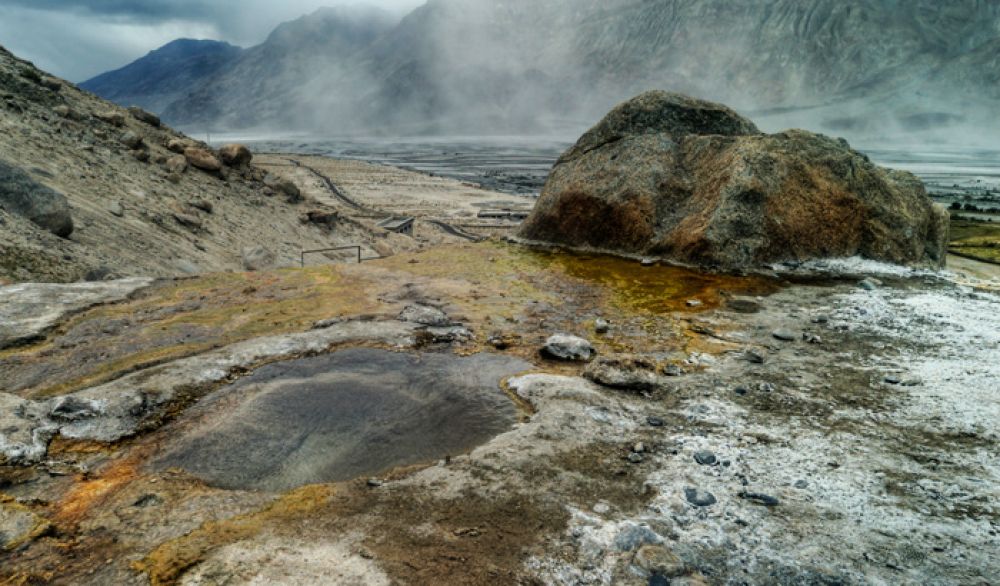

The Panamik Hot Springs, situated in the enchanting Nubra Valley of Ladakh, India, have long been a natural wonder known primarily to the local inhabitants. This secluded gem, famed for its therapeutic properties, has gradually emerged as an interesting spot on the tourist map of Ladakh. Steeped in legend and surrounded by the stark yet beautiful landscape of the Himalayas, the Panamik village is the northernmost part of India where foreigners are allowed to visit.
Tourism in Panamik commenced when the Indian government gradually opened Ladakh to tourism in the 1970s. Initially, Ladakh attracted a small number of intrepid travelers and explorers drawn to its remote monasteries and stark high-altitude desert landscapes. Over the years, as infrastructure developed and the region became more accessible, tourists began flocking to its many natural and cultural attractions, including the Thiksey Monastery, Pangong Lake, and the double-humped camel safaris in Hunder.
However, it wasn't until the late 1990s and early 2000s that the Panamik Hot Springs started gaining attention as a tourist destination. The springs' reputed healing properties, coupled with the cultural allure of Nubra Valley, have since become a point of fascination.
With an increase in tourism, Panamik has seen modest development to cater to the needs of visitors. Small guest houses and homestays offer accommodation, giving travelers an opportunity to experience local hospitality. The hot springs remain the main attraction, providing a soothing experience for those looking to unwind after a trek in the high altitude.
The region's tourism has been influenced largely by the seasons, with the summer months between June and September being the most popular due to the pleasant weather. Winter tourism is also growing with the introduction of the Chadar Trek on the frozen Zanskar River, although Panamik itself remains relatively quiet during the cold season due to accessibility issues.
With the increase in footfall, concerns about environmental conservation and sustainable tourism practices have come to the fore. Efforts are being made to protect the delicate ecosystem of Nubra Valley and its hot springs. Local guides and tourism cooperatives stress the importance of responsible tourism, waste management, and minimizing impact on the local culture and environment.
The Indian government and various NGOs have implemented programs and guidelines to ensure that the natural beauty and heritage of Nubra Valley are preserved for future generations. As an offshoot, ecotourism has started to gain popularity, with more travelers looking for authentic experiences that also contribute positively to the local community.
Looking forward, the rise of adventure tourism and cultural exchanges is anticipated to contribute to a steady growth in visitor numbers. Infrastructure improvements, such as better road connectivity and the upgrading of Leh Airport, are expected to further facilitate travel to this remote region.
The Panamik Hot Springs continue to hold a mystical allure, beckoning those seeking a blend of adventure, relaxation, and cultural immersion. As tourism evolves, it is hoped that the balance between visitor satisfaction and preservation of Panamik's unique environmental and cultural heritage can be maintained, ensuring that these hot springs can be enjoyed for many years to come.